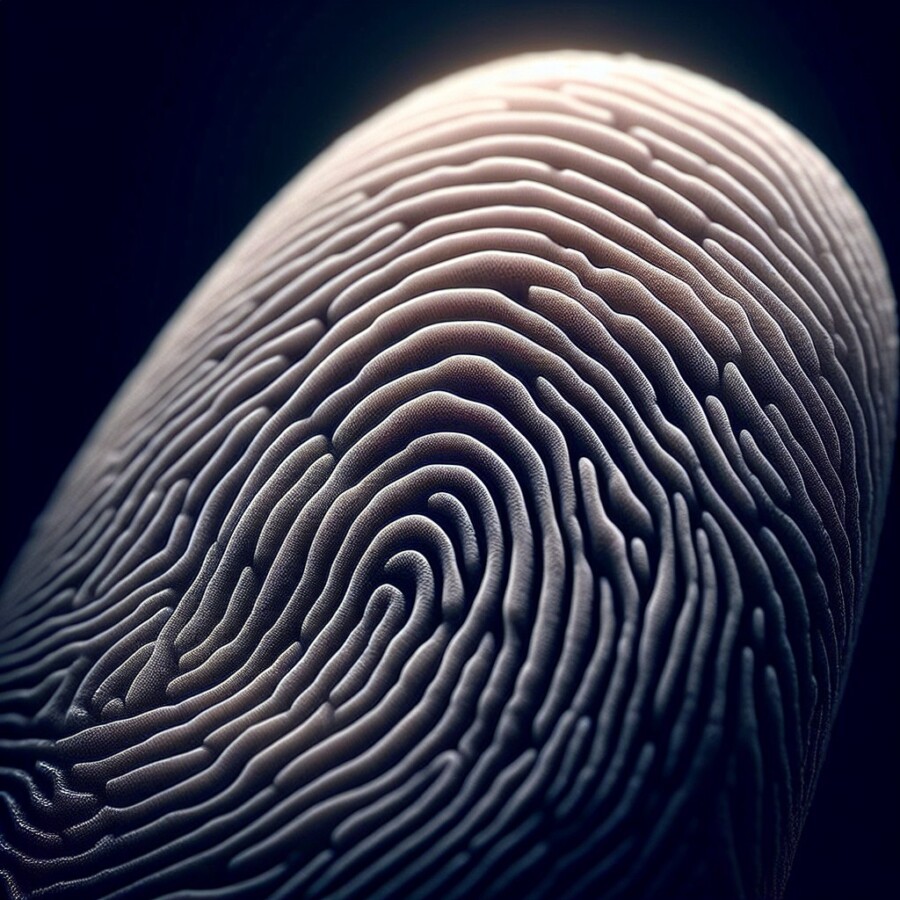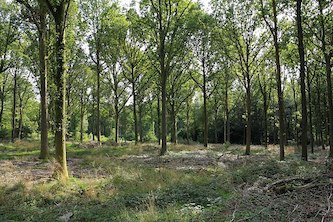A recent medical breakthrough has allowed a man with advanced Parkinson’s disease to regain his ability to walk. Marc Gauthier, 63, from Bordeaux, France, was the first person to receive a special implant that stimulates nerves in his spine. Before the implant, Marc struggled with walking, often being housebound and experiencing frequent falls. However, with the help of the implant, he can now walk for miles and has regained his independence.
The implant, which is placed on the lumbar region of the spinal cord, sends electrical signals to the leg muscles, allowing for smoother movement. Marc still retains control over his movements, with the implant providing additional electrical signals for improved mobility. After undergoing surgery to implant the device, Marc underwent weeks of rehabilitation to program it, using feedback sensors on his legs and shoes.
The success of this treatment has been described as impressive by the medical team involved. Neurosurgeon Jocelyne Bloch, who fitted Marc’s device, stated that the technology and procedure have previously helped spinal-injury patients, but this was the first time it had been used for Parkinson’s disease. The team plans to further test the device in six more Parkinson’s patients to assess its effectiveness.
While this breakthrough is promising, it is important to note that it is not a cure for Parkinson’s disease, which is a progressive condition. The research is still in its early stages and requires further development and testing before it can be made widely available. However, this advancement offers hope for individuals with advanced Parkinson’s, where traditional treatments may no longer be effective.
Original news source: Parkinson’s implant restores man’s ability to walk (BBC)
Listen
Slow
Normal
Fast
Group or Classroom Activities
Warm-up Activities:
– News Reporter Role-play
Instructions: Students will be divided into pairs. One student will act as a news reporter, and the other as neurosurgeon Jocelyne Bloch or Marc Gauthier. The reporter will interview their partner about the recent medical breakthrough, asking questions about the implant, the procedure, and the impact on Marc’s life. Encourage the use of specific vocabulary from the article and appropriate follow-up questions.
– Opinion Spectrum
Instructions: Write a series of statements about the potential implications of the medical breakthrough on the board (e.g., “This technology should be made available worldwide as soon as possible,” “The risks of such a procedure outweigh the benefits”). Ask students to stand along a line in the classroom that represents a spectrum from “strongly agree” to “strongly disagree.” Students will place themselves on the spectrum according to their opinion and discuss their reasoning with the class, using evidence from the article to support their stance.
– Vocabulary Pictionary
Instructions: Write down key terms from the article (e.g., implant, lumbar region, spinal cord, mobility, rehabilitation, progressive condition). Divide the class into two teams. One member from each team will come to the board to draw the term they are given, while their team tries to guess the word within a set time limit. No letters or numbers can be used in the drawings, only symbols and representations.
– Speed Summarizing
Instructions: Give students a set amount of time (e.g., 2 minutes) to summarize the article in their own words, capturing the key points and main ideas. After the time is up, students will share their summaries with a partner, who will give feedback on clarity, conciseness, and the inclusion of essential information. Pairs will then share the best points of each summary with the whole class.
– Future Predictions
Instructions: Ask students to write a short paragraph predicting the future of the medical treatment described in the article. They should consider the potential advancements, challenges, and ethical implications of the technology. Afterwards, have a class discussion where students share their predictions and provide reasons for their viewpoints, encouraging them to use modal verbs of probability and speculation (e.g., might, could, may).
Comprehension Questions:
1. What medical condition was Marc Gauthier suffering from before receiving the special implant?
2. What is the primary function of the implant that Marc Gauthier received?
3. How has the implant affected Marc Gauthier’s ability to walk and his independence?
4. Where is the implant placed on Marc Gauthier’s body?
5. What type of control does Marc Gauthier have over his movements after receiving the implant?
6. What was the process Marc underwent after the surgery to ensure the implant worked correctly?
7. Who is the neurosurgeon that fitted Marc’s device, and what has the technology previously been used for?
8. What are the future plans for testing the device, and how many Parkinson’s patients are involved in the next phase of assessment?
Go to answers ⇩
Listen and Fill in the Gaps:
A recent (1)______ breakthrough has allowed a man with advanced Parkinson’s disease to regain his ability to walk. Marc Gauthier, 63, from (2)______, France, was the first person to receive a special (3)______ that stimulates nerves in his (4)______. Before the implant, Marc struggled with walking, often being housebound and experiencing frequent falls. However, with the help of the implant, he can now walk for miles and has regained his independence.
The implant, which is placed on the lumbar (5)______ of the spinal cord, sends electrical signals to the leg muscles, allowing for (6)______ movement. Marc still retains (7)______ over his movements, with the implant providing additional electrical signals for improved mobility. After undergoing surgery to implant the device, Marc underwent weeks of rehabilitation to (8)______ it, using feedback sensors on his legs and shoes.
The success of this (9)______ has been described as impressive by the medical team involved. Neurosurgeon Jocelyne Bloch, who fitted Marc’s (10)______, stated that the technology and procedure have previously helped spinal-injury patients, but this was the (11)______ time it had been used for Parkinson’s disease. The team plans to further test the device in six more Parkinson’s patients to (12)______ its effectiveness.
While this breakthrough is promising, it is important to note that it is not a cure for Parkinson’s disease, which is a (13)______ condition. The research is still in its early stages and requires further development and (14)______ before it can be made widely available. However, this (15)______ offers hope for individuals with advanced Parkinson’s, where traditional (16)______ may no longer be effective.
Go to answers ⇩
Discussion Questions:
Students can ask a partner these questions, or discuss them as a group.
1. What is your understanding of Parkinson’s disease and how it affects a person’s life?
2. How would you feel if a loved one was diagnosed with an advanced stage of Parkinson’s disease?
3. Do you think medical implants like the one mentioned in the article will become a common treatment for various diseases in the future? Why or why not?
4. Have you or someone you know ever experienced a significant improvement in health due to a medical device or procedure?
5. What is your opinion on the use of technology in medicine, particularly in treating neurological conditions?
6. How do you think Marc’s life will change now that he has regained his ability to walk?
7. Do you believe that the benefits of such medical breakthroughs outweigh the risks and costs associated with them? Why or why not?
8. In what ways do you think gaining back independence can impact a person’s mental and emotional health?
9. How important do you think it is for patients with chronic conditions to keep hope for new treatments?
10. What do you think are the ethical considerations of implementing new and largely untested medical technologies in patients?
11. Do you like the idea of using electrical implants to assist bodily functions? Why or why not?
12. How do you think society’s view of disabilities might change with the advancement of medical technology?
13. Do you think the government should invest more in the research and development of treatments for diseases like Parkinson’s? Why or why not?
14. What is the role of rehabilitation in recovery from serious health conditions, in your opinion?
15. How would you feel if you were part of a clinical trial for a new medical treatment? Would you be more excited or apprehensive, and why?
Individual Activities
Vocabulary Meanings:
Match each word to its meaning.
Words:
1. implant
2. Parkinson’s
3. Bordeaux
4. rehabilitation
5. independence
6. lumbar
7. progressive
8. effectiveness
Meanings:
(a) A condition affecting the nervous system
(b) The process of restoring health and normal life
(c) A city in southwestern France
(d) A device placed inside the body
(e) Relating to the lower part of the spine
(f) The degree to which something is successful
(g) The quality of being self-reliant
(h) Gradually advancing or increasing
Go to answers ⇩
Multiple Choice Questions:
1. Where is Marc Gauthier from?
(a) Berlin, Germany
(b) London, England
(c) Bordeaux, France
(d) Madrid, Spain
2. What does the implant stimulate in Marc’s body?
(a) Muscles in his arms
(b) Nerves in his spine
(c) His brain
(d) His digestive system
3. How has the implant helped Marc?
(a) He can now walk for miles
(b) He can now run marathons
(c) He can now swim long distances
(d) He can now lift heavy weights
4. Who fitted Marc’s implant?
(a) Cardiologist Marie Dupont
(b) Orthopedic surgeon Pierre Lefevre
(c) Pediatrician Sophie Martin
(d) Neurosurgeon Jocelyne Bloch
5. What is the purpose of the feedback sensors on Marc’s legs and shoes?
(a) To measure his heart rate
(b) To track his sleep patterns
(c) To monitor his blood pressure
(d) To program the implant
6. What does the medical team plan to do next with the device?
(a) Use it for spinal-injury patients
(b) Discontinue its use
(c) Test it in six more Parkinson’s patients
(d) Make it widely available
7. What is the important thing to note about this breakthrough?
(a) It is not a cure for Parkinson’s disease
(b) It is a cure for Parkinson’s disease
(c) It is only effective for young patients
(d) It is not effective for advanced Parkinson’s
8. What does the article say about the research and development of the implant?
(a) It is already widely available
(b) It is still in its early stages and requires further testing
(c) It is only effective for spinal-injury patients
(d) It is not promising for the future
Go to answers ⇩
True or False Questions:
1. Neurosurgeon Jocelyne Bloch, who fitted Marc’s device, stated that the technology and procedure have never helped spinal-injury patients before, but this was the first time it had been used for Parkinson’s disease.
2. The success of this treatment offers hope for individuals with advanced Parkinson’s, where traditional treatments may no longer be effective.
3. After receiving the implant, Marc struggled with walking, often being housebound and experiencing frequent falls due to his advanced Parkinson’s disease.
4. This breakthrough is not a cure for Parkinson’s disease, which is a progressive condition, and the research is still in its early stages.
5. The implant is placed on the lumbar region of the spinal cord and sends electrical signals to the leg muscles, enabling smoother movement.
6. The medical team involved in the breakthrough does not plan to further test the device in six more Parkinson’s patients to assess its effectiveness.
7. Marc underwent weeks of rehabilitation to program the implant, using feedback sensors on his legs and shoes.
8. Marc Gauthier, a 63-year-old man from Bordeaux, France, was the first person to receive a special implant that inhibits nerves in his spine, limiting his ability to walk.
Go to answers ⇩
Write a Summary:
Write a summary of this news article in two sentences.
Check your writing now with the best free AI for English writing!
Writing Questions:
Answer the following questions. Write as much as you can for each answer.
Check your answers with our free English writing assistant!
1. What medical condition was Marc Gauthier suffering from, and how has the new implant affected his ability to walk?
2. Where is Marc Gauthier from, and how old is he?
3. What specific area of the spinal cord is the implant placed, and how does it help improve mobility?
4. Who is the neurosurgeon that fitted Marc’s device, and for what other condition has the technology been used before?
5. How many more Parkinson’s patients are planned to be tested with the new implant, and what is the current stage of the research?
Answers
Comprehension Question Answers:
1. What medical condition was Marc Gauthier suffering from before receiving the special implant?
Marc Gauthier was suffering from advanced Parkinson’s disease before receiving the special implant.
2. What is the primary function of the implant that Marc Gauthier received?
The primary function of the implant is to stimulate nerves in the spine, sending electrical signals to the leg muscles to allow for smoother movement.
3. How has the implant affected Marc Gauthier’s ability to walk and his independence?
The implant has allowed Marc Gauthier to walk for miles and regain his independence, which he had lost due to his struggle with walking and frequent falls.
4. Where is the implant placed on Marc Gauthier’s body?
The implant is placed on the lumbar region of Marc Gauthier’s spinal cord.
5. What type of control does Marc Gauthier have over his movements after receiving the implant?
Marc Gauthier retains control over his movements, with the implant providing additional electrical signals for improved mobility.
6. What was the process Marc underwent after the surgery to ensure the implant worked correctly?
After the surgery, Marc underwent weeks of rehabilitation to program the implant, using feedback sensors on his legs and shoes.
7. Who is the neurosurgeon that fitted Marc’s device, and what has the technology previously been used for?
The neurosurgeon who fitted Marc’s device is Jocelyne Bloch, and the technology has previously been used for spinal-injury patients.
8. What are the future plans for testing the device, and how many Parkinson’s patients are involved in the next phase of assessment?
The future plans include testing the device in six more Parkinson’s patients to assess its effectiveness.
Go back to questions ⇧
Listen and Fill in the Gaps Answers:
(1) medical
(2) Bordeaux
(3) implant
(4) spine
(5) region
(6) smoother
(7) control
(8) program
(9) treatment
(10) device
(11) first
(12) assess
(13) progressive
(14) testing
(15) advancement
(16) treatments
Go back to questions ⇧
Vocabulary Meanings Answers:
1. implant
Answer: (c) A city in southwestern France
2. Parkinson’s
Answer: (a) A condition affecting the nervous system
3. Bordeaux
Answer: (b) The process of restoring health and normal life
4. rehabilitation
Answer: (g) The quality of being self-reliant
5. independence
Answer: (d) A device placed inside the body
6. lumbar
Answer: (e) Relating to the lower part of the spine
7. progressive
Answer: (h) Gradually advancing or increasing
8. effectiveness
Answer: (f) The degree to which something is successful
Go back to questions ⇧
Multiple Choice Answers:
1. Where is Marc Gauthier from?
Answer: (c) Bordeaux, France
2. What does the implant stimulate in Marc’s body?
Answer: (b) Nerves in his spine
3. How has the implant helped Marc?
Answer: (a) He can now walk for miles
4. Who fitted Marc’s implant?
Answer: (d) Neurosurgeon Jocelyne Bloch
5. What is the purpose of the feedback sensors on Marc’s legs and shoes?
Answer: (d) To program the implant
6. What does the medical team plan to do next with the device?
Answer: (c) Test it in six more Parkinson’s patients
7. What is the important thing to note about this breakthrough?
Answer: (a) It is not a cure for Parkinson’s disease
8. What does the article say about the research and development of the implant?
Answer: (b) It is still in its early stages and requires further testing
Go back to questions ⇧
True or False Answers:
1. Neurosurgeon Jocelyne Bloch, who fitted Marc’s device, stated that the technology and procedure have never helped spinal-injury patients before, but this was the first time it had been used for Parkinson’s disease. (Answer: False)
2. The success of this treatment offers hope for individuals with advanced Parkinson’s, where traditional treatments may no longer be effective. (Answer: True)
3. After receiving the implant, Marc struggled with walking, often being housebound and experiencing frequent falls due to his advanced Parkinson’s disease. (Answer: False)
4. This breakthrough is not a cure for Parkinson’s disease, which is a progressive condition, and the research is still in its early stages. (Answer: True)
5. The implant is placed on the lumbar region of the spinal cord and sends electrical signals to the leg muscles, enabling smoother movement. (Answer: True)
6. The medical team involved in the breakthrough does not plan to further test the device in six more Parkinson’s patients to assess its effectiveness. (Answer: False)
7. Marc underwent weeks of rehabilitation to program the implant, using feedback sensors on his legs and shoes. (Answer: True)
8. Marc Gauthier, a 63-year-old man from Bordeaux, France, was the first person to receive a special implant that inhibits nerves in his spine, limiting his ability to walk. (Answer: False)
Go back to questions ⇧













